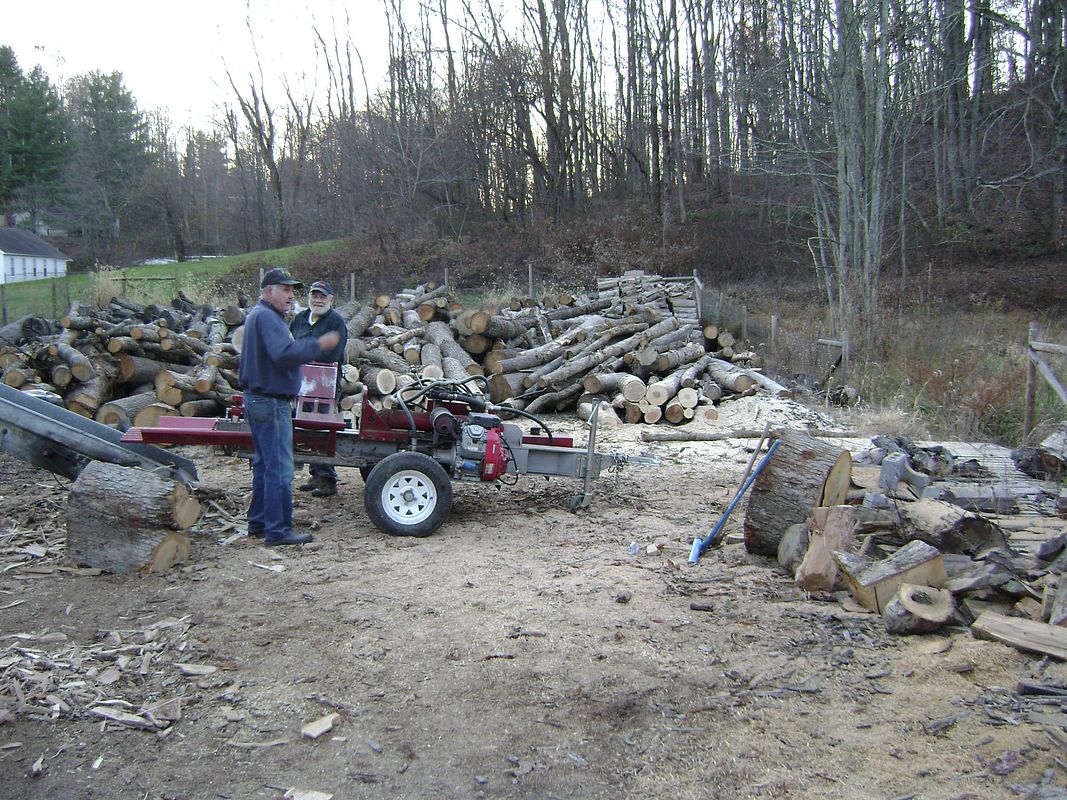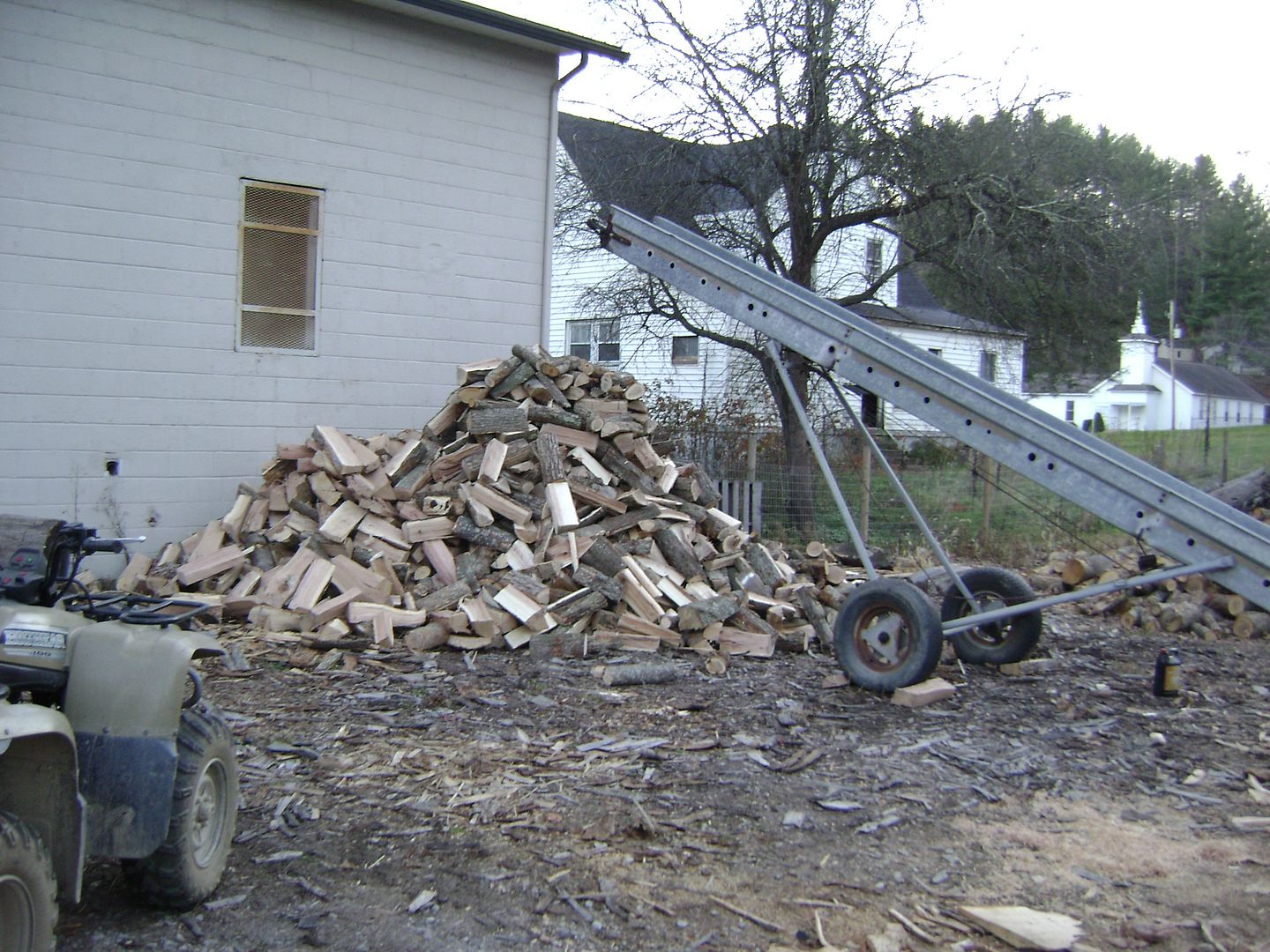I have a customer for firewood. He would like the firewood to be in logs. This is my dilemma. How do I know when I have cut enough logs to make seven cords. As you know each log is different and I am trying find a formula I can use in the field to determine how many cords are in a log, and the easiest measurements are average diameter and length.
I have heard repeatedly that there are 500 board feet in a cord of wood, so according to Doyles Rule you should yield a cord of wood from a log that is 28" in diameter and 14' long. It is my understanding the Doyles Rule takes into consideration, the taper of the log, the bark on the log and allows 1/4" kerf for each pass for the sawblade when cutting lumber. Now with all this waste using Doyles Rule, one would think that if you are using the entire log you should yield more cords of firewood than you would yield cords of lumber, but when I calculate using the formula "Radius Squared * Pi * Length / 92 I get less yield in cords of firewood per log which to me is not logical.
Bottom line is I do not want to short my customer, but at the same time I do not want to give lumber away and short myself.
A log 28" x 14' yields 504 board feet (More than a cord) according to Doyles Rule with a lot of waste for the kerf, bark and taper.
A log 28" x 14' yields only 0.65 of a cord using the formula "((average_diameter [feet] ÷ 2)² × pi × length [feet]) ÷ 92" and there is no waste for kerf, bark, and taper. To me if you do not waste anything you should yield more cords of firewood then you would lumber out of the same log.
I sure wish there was a smiley face of one scratching ones head.



























































